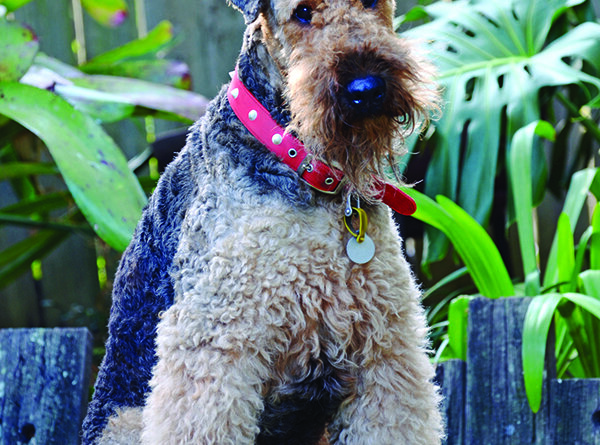Don’t Wait! Prevent Collar Accidents
I’m not one of those dog owners who has her dogs wrapped in cotton wool, constantly looking to protect them from any and all possible hazards. I walk my dogs off-leash in rattlesnake habitats. I sometimes feed them raw eggs. I allow them to swim without wearing life jackets, and so on.
Some of my willingness to expose them to potential health risks might be due to my generation. As the youngest of four kids raised in the 1960s, I grew up unseatbelted – in fact, most of the time I sat on the hump between the two front seats! My generation was subjected to many more potentially life-endng risks than are even legal today.
But there are a couple specific risks I absolutely will not take with my dogs, and they have to do with their collars.
STANDARD TANG BUCKLE
The first danger I won’t expose my dogs to is a collar with a regular metal buckle – you know! The kind that has a frame and a tang or prong that fits through a hole on the collar and is secured by the back of the buckle frame. Why have I taken a stand against such a ubiquitous piece of dog equipment?
The answer is: Because in a terrible emergency, when a dog’s collar is caught on something and he’s choking to death, the only way to unbuckle that buckle – to get that metal prong or tang out of its hole – is to pull it a little bit tighter. And you will have to believe me when I say I know, from personal experience, that when a dog starts choking to death, he won’t be holding cooperatively still in perfect understanding that you need to make his discomfort worse for a moment in order to save his life.
The dog who nearly choked to death in my hands was not my dog – he belonged to a neighbor. But I ran to help when I heard the sound of dogs and women screaming, and was confronted with a writhing tangle of gasping, screaming, urinating, panicking canines. Two dogs had been playing when one grabbed the other by his collar and then rolled over; the collar twisted, pressing his tongue into his own lower teeth – and tightening to the point of choking his playmate.
I and the dogs’ owners, both young women, tried frantically to figure out how to untwist the dogs, but they were big, strong dogs in a full panic, and we couldn’t do it. I dug my hands into the dogs’ fur, looking for buckles to unbuckle. One dog was wearing a quick-release collar – but it wasn’t the collar that was tight. I finally found the buckle for that collar, and it was partially in the mouth of the dog who was twisted, impossibly tight – too tight to be able to tighten it more in order to get the tang of the buckle undone.
As I was working to find the buckles, one of the other women ran into the house and got scissors. She managed to hack through the thick nylon collar, releasing the dogs just a moment after the choking one lost consciousness and released his bowels. About two seconds after the collar was cut, he took a gasping, ragged breath, and then another, and slowly came to as we sobbed and patted him and the other dog and hugged each other.
PLAY NAKED
There is a second lesson to be learned from my nightmare story: When dog friends are playing bitey-face games, they shouldn’t be wearing collars at all. Playful dogs who are left home alone together shouldn’t be wearing collars, either.
TAG, YOU’RE IT

Here’s the other thing I don’t like to see hanging from dogs’ necks: Metal or other rigid ID tags – because it’s easy for tags to get caught on things, pinning a dog in a scary position and causing her to panic.
The last time I used tags was on a foster dog I had crated in my kitchen. I heard a ruckus and found her thrashing; her tags had somehow slipped through the ventilating slits on the side of the crate (perhaps when she was turning around?) and got stuck.
More commonly, dogs get stuck when they lay on a floor near a floor-mounted vent, either warming or cooling themselves, as appropriate for the season. Their tags slip through the vent as they lay on the floor, and when they try to get up, the tags turn and get stuck. Hysteria generally ensues. Best case, someone is home and rescues them. Worst case? Don’t ask. Awful.
SOLUTIONS
Personally, I am comfortable having my dogs collar-free most of the time. If they escaped my home, say, in an earthquake or something, I know that they would readily go to my neighbors or even strangers for rescue. They are microchipped and the chips are registered to me with current contact information.
But if keeping ID on your dog is more critical to you, perhaps because your dog might be a major flight risk if she got loose, there are a few safer solutions.
As an alternative to using ID tags, I buy collars that have side-release plastic buckles (easy to unsnap in an emergency) and have my phone number stitched into the fabric. However, even these are taken off when I am not home or when I am fostering a dog who might play with my younger dog (my older dog doesn’t play).
Silicone tags, such as the ones from Silidog.com, are a safe alternative. They are strong but flexible; even a spindly, tiny dog would be able to pull free if his silicone tag got caught.
I am aware of one company (PetSafe) that sells a collar that closes with a hook-and-loop fastener, which can tear apart if a dog gets caught by the collar. It’s called the KeepSafe Break-Away Safety collar, and available from PetSafe or on Amazon.com.
Please consider employing at least one of these alternatives if you currently use a standard buckle collar and/or metal tags on your dog.
Nancy Kerns is WDJ’s editor.




